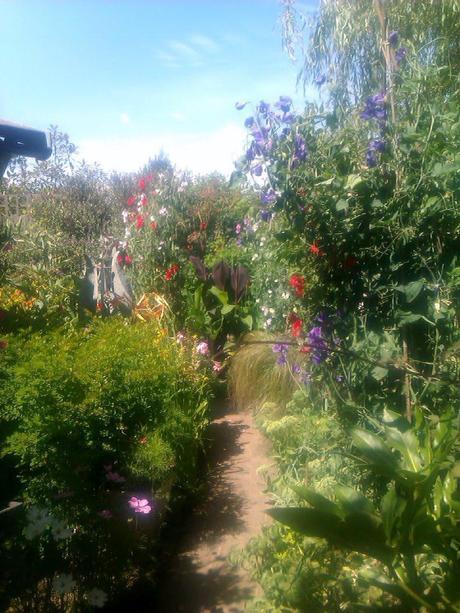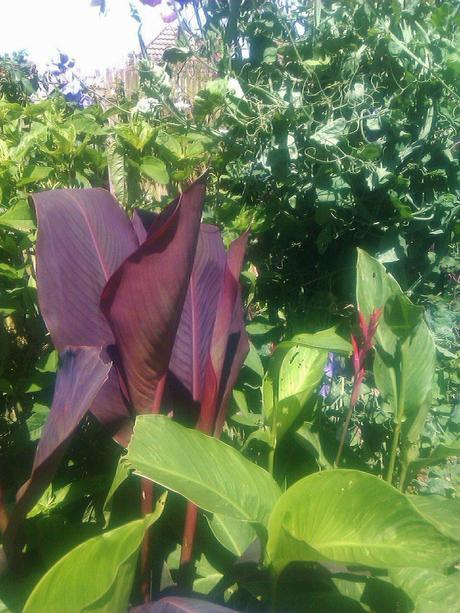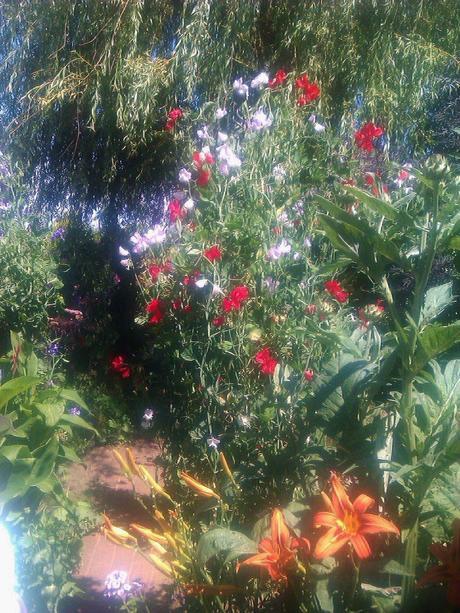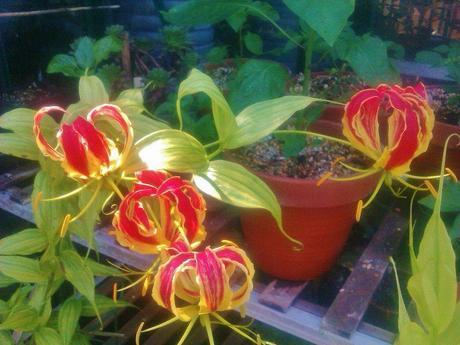When starting to write this post, fortune would have it that earlier this week on Radio 4 there was a program called “What is the point of… Lawns”. It made be investigate more bout lawns and integrate my visit to a garden with no lawn at all.
The history of a lawn.
The Middle English word ‘launde’ originally referred to a glade or opening in the woods. Some of the earliest lawns were the grasslands around medieval castles, kept clear of trees so that visitors and marauders alike could be seen.
In the 16th Century Renaissance, lawns were deliberately cultivated by the wealthy though they were more likely planted with chamomile or thyme than with grass.
Close cut lawns first emerged in the 17th century at the homes of large, wealthy landowners. Before lawnmowers, only the rich could afford to hire labourers to scythe and weed the grass, making a lawn the mark of wealth and status. Larger areas were kept short by grazing sheep and cattle.
In 1830 Edwin Budding invented the lawnmower. Edwin Budding’s patent shows: “Country gentlemen may find in using my machine themselves an amusing, useful and healthy exercise.” Suddenly, an average middle-class homeowner could enjoy the prestige of a lawn.
John Claudius Louden (1783-1843) promoted the idea that gardens should be for domestic pleasure and invented the term Gardenesque , this developed the Victorains taste for gardens as we known them. He also established in 1823 the first horticultural periodical called “The Gardeners Magazine”.
After the Second World War the perfect lawn became an integral part of the suburban, post-war landscape. As more and more houses were built, all with the necessary lawn, the lawn became smaller and more manageable.
What is the point of a lawn?
About 15 million of us have lawns and as a nation we spend approximately £54m a year on fertilisers and other lawn products,
They provide a green canvas for our plants and flowers and when mowed can look splendid. Green is a tranquil color and is supposed to bring peace and well recognised as a color of tranquillity.
Do you actually sit on your lawn and enjoy it? I know I don’t. I may sit down for a few minutes looking at the garden but always find something that needs attention. How many of us maintain our lawns using fertilizer and huge amounts of water but only spend time on the lawn when they are mowing it? A lawn can be hard work; if it is a mess and the edges are ragged then the whole garden looks a mess.
Today, large lawns are seen by some as non-ecological for three reasons. First, is water is precious and need to be conscious of water use.
The second problem is the use of fertilizer on lawns. The grass plants will not use excess phosphorous, and it is a major problem when irrigation water runs off or soil erosion enters the surface water.
Finally, grass is a monoculture, as we spend time and money removing weeds from our lawns they provide no food or shelter for important pollinator insects.
Makes you think doesn’t it?
An alternative to smaller or no lawn at all
Smaller or even no lawn creates more room for plants making them more environmentally friendly.
Last weekend I visited such a garden in Seaford – 8 Sandgate Close, open on Charity and NGS days.
Before I start please accept my apologies for the poor quality photos. Due to ‘chemo fog brain’ I left my camera at home so had to use my mobile so the photos have a misty quality to them.

Aideen and Dennis Jones have owned this garden since 1982 and gradually over the years turned a poor quality garden into a splendid planted area with paths weaving their way through the garden giving an impression of somewhere very much larger than it really is. They gradually removed all their lawn even holding an event in 2007 to celebrate giving away their lawn mower.
One of two inherited Willows remain in place creating shade and in what I think is the middle of the garden is a summer house and gazebo.

Aideen and Dennis are very proud of their Canna patch, which they have been growing for the last six years, culivating many in their greenhouse.

I particulaly liked the color coordinated sweet peas grown in large blue pots. They smelled glorious and made me feel sad that for the first year of many I have not grown any, They usually buy their seeds from the Chelsea Flower Show but this year they came from Easton Walled Gardens.

Sadly the photographs do not really do the garden justice but I hope they give you an idea of how you can have a great garden without the need for a lawn. It certainly left me with many ideas of how I can take a another look at my garden and reduce my already small lawn, if not get rid it completely. The garden at Sandgate Close leads you from one area to another with height obscuring where you were heading too. This made each new area, including a courtyard with a soothing water feature, a gazebo and Spring Garden. all the more interesting.
I can’t finish this post without a photo of Aideen’s pride and glory growing in one of their many greenhouses. It is Gloriouse Rothschild lily and perfectly beautiful. My friend said she thought the flowers looked like fairy coaches and I am indinded to agree with her.

In June, and some dates July and August the garden is open by private appointment as well as being open for charity days.
Contact details – Phone: 01323 899452 (answerphone available) Email: [email protected] and [email protected]
© Hurtlingtowards60 and Hurtled to 60 and Now Beyond ©AarTeePhotography; Unauthorized use and/or duplication of photographs without express and written permission from this blog’s author is strictly prohibited
Related articles
- http://www.organiclawncare101.com/history.html
- http://www.parksandgardens.org/further-reading/explore/176-historical-profiles/477-john-claudius-loudon-father-of-the-english-garden
- http://www.grassclippings.co.uk/
- My love affair with the great British lawn: Other nations mock our obsession with grass, but there’s no more blissful way to restore our spirits than getting out the mower (dailymail.co.uk)
- Lawns – is the Grass always Greener over the fence? (plewspottingshed.wordpress.com)

